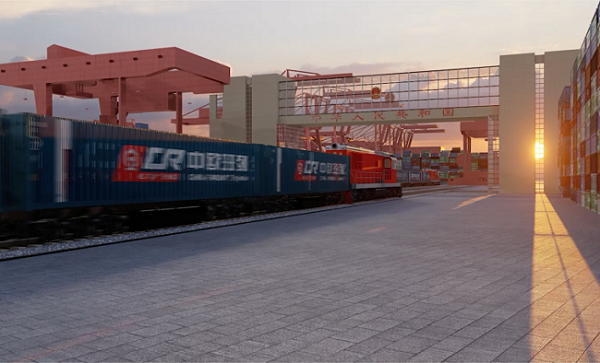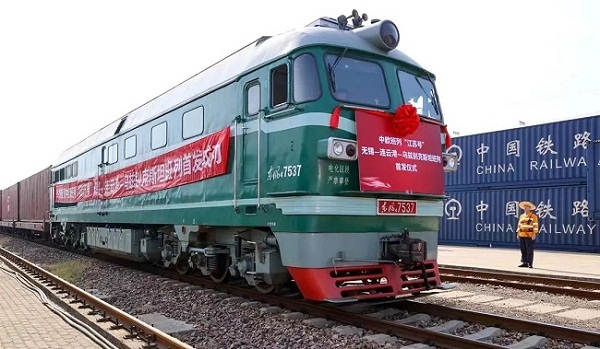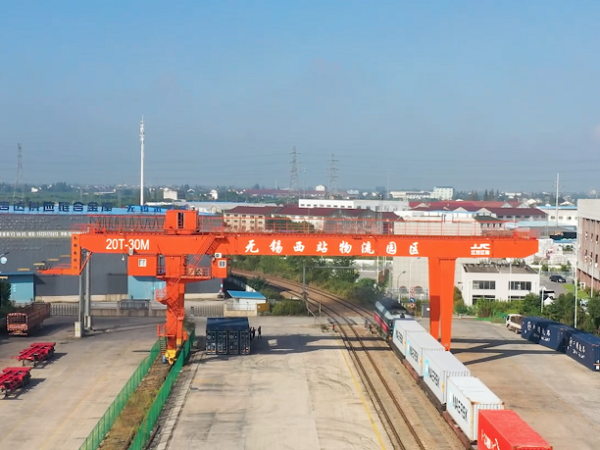
Carriages for China-Europe freight trains. [Photo/Wuxi Daily]
The number of China-Europe freight trains departing Wuxi in East China's Jiangsu province will be increased and services will be improved, local media reported on Nov 29.
The city has since March dispatched 15 China-Europe freight trains carrying cargo worth 320 million yuan ($44.75 million) in total to Moscow, Germany, and five Central Asian countries via Xuzhou, Suzhou, Lianyungang and Nanjing.
China-Europe freight trains have offered timely support to export-oriented Wuxi, as the cost is just one-fifth that of air transportation and transportation is four times quicker than sea transportation, greatly alleviating pressure on the city's foreign trade enterpises from COVID-19 outbreaks.

A China-Europe freight train departs from Lianyungang for Uzbekistan after leaving Wuxi. [Photo/Wuxi Daily]
The city offers more flexible transportation options, as enterprises can deliver cargos through a combination of train, airport and road.
As an important city involved in the BRI, the Yangtze River Economic Belt, and Yangtze River Delta integration, Wuxi has taken full advantage of its role as a pivotal city and aims to become an international rail freight center.
In November, Wuxi inked a strategic cooperation agreement with Suzhou to dispatch China-Europe freight trains to European countries via the city.

The West Wuxi Railway Station Logistics Park, the departure station of international freight trains in Wuxi. [Photo/Wuxi Daily]
On Dec 1, Wuxi will host a forum during the China-Europe Express Cooperation Forum in Liangyungang with related government departments to discuss the sustainable development of China-Europe freight trains.
In 2021, Wuxi's imports and exports exceeded $100 billion, a year-on-year increase of 20.4 percent and accounting for 13.1 percent of the province's total, while its trade with countries involved in BRI totaled $27.24 billion.
In the first 10 months of the year, the city's imports and exports amounted to 613.43 billion yuan, a year-on-year increase of 11 percent.